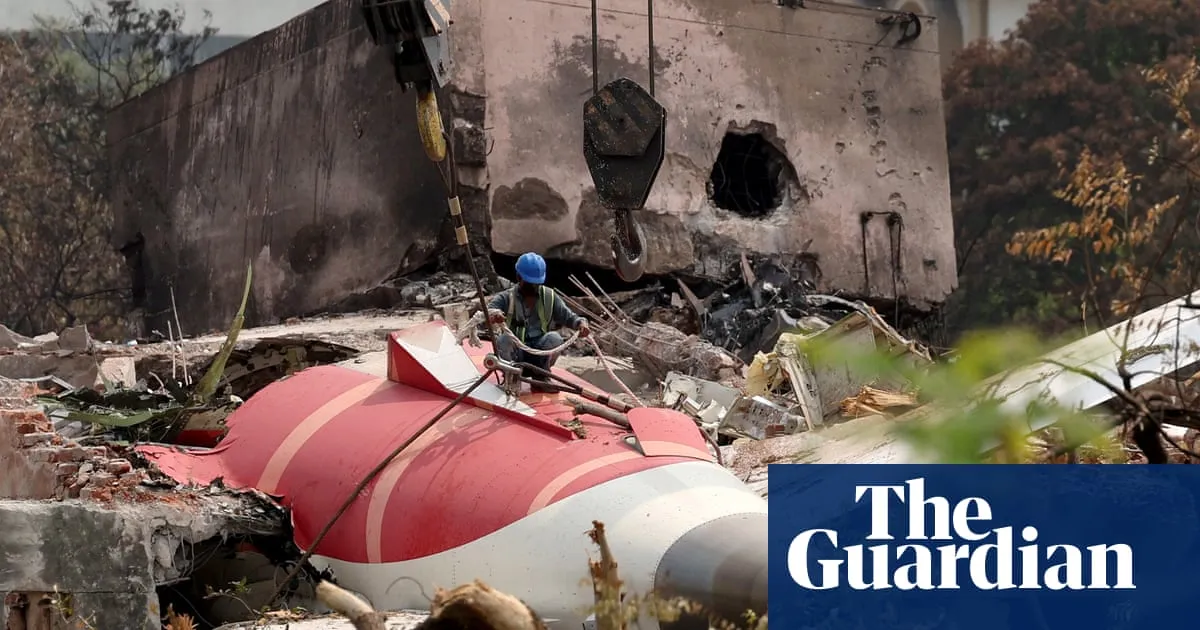
In a devastating turn of events, the pilot of Air India Flight 171 sent a final distress signal, “Mayday, mayday,” just moments before the aircraft tragically crashed, resulting in the loss of over 270 lives. This catastrophic incident occurred shortly after takeoff from Ahmedabad Airport at 1:39 PM on Thursday. During a briefing by India’s aviation authorities on Saturday, it was confirmed that Captain Sumeet Sabharwal issued the emergency call to air traffic control less than a minute after liftoff.
According to Samir Kumar Sinha, a secretary for India’s aviation ministry, there was no response from the pilot after the initial mayday call was made. Seconds later, the aircraft plummeted to the ground. Preliminary investigations revealed that the Boeing 787-8 Dreamliner had reached an altitude of 650 feet before rapidly descending and crashing in Meghani Nagar, approximately 2 kilometers from the airport.
The 227-tonne aircraft collided with a hostel that housed medical students and their families, resulting in a tragic loss of life. Among the 242 individuals aboard the flight, only one survived, marking this incident as one of the deadliest aviation disasters in India in recent years. The impact also claimed the lives of at least three medical students and a pregnant woman, alongside several labourers and vendors in the vicinity.
Indian aviation authorities have refrained from speculating on the cause of the crash, although they did mention that “every theory going around about the crash will be looked at.” Sinha reported that the flight data recorder, commonly known as the black box, had been successfully recovered and was currently under investigation. A thorough assessment of the incident is expected to be completed within three months.
Ram Mohan Naidu Kinjarapu, the civil aviation minister, stated during the press briefing, “The decoding of this black box is going to provide in-depth insight into what occurred during the crash.” To aid in the investigation, a team of four aviation accident experts from the UK arrived in Ahmedabad on Friday night.
By Saturday morning, the death toll had tragically risen to at least 274 as investigators continued to sift through the wreckage, recovering additional bodies. Families of the victims gathered at the Civil Hospital in Ahmedabad, where the deceased were transported, expressing their anger and frustration over delays in the identification and return of their loved ones' bodies.
Anil Patel, who lost his son Harshit, aged 30, and daughter-in-law Pooja, aged 28, voiced his distress over the situation. Having submitted DNA samples to aid in the identification process, he lamented the lack of information. “We still don’t know exactly when we’ll get the body,” Patel shared. He described his son and daughter-in-law as “all I had left” following the death of his wife six years prior, emphasizing the emotional toll of the tragedy.
Authorities noted that the task of identifying the victims, whose bodies may have been severely charred or dismembered due to the impact, was a complex and time-consuming process. “We are dealing with at least 250 samples, and for each match, we have to cross-verify it against this entire pool. It’s a process of elimination, and that naturally takes time,” explained an official at the hospital. The team has been working tirelessly to ensure accurate matching of DNA samples to the victims’ bodies.
Among the tragedy, there is a glimmer of hope with the survival of one passenger, Vishwash Kumar Ramesh, whose escape from the crash has been described as a “miracle” by experts. Currently hospitalized in Ahmedabad, Ramesh is under observation but is reported to be recovering well. Dr. Gameti from Ahmedabad Civil Hospital indicated that Ramesh “is doing very well and will be ready to be discharged anytime soon.”
This tragic incident has not only shaken the aviation community but also left an indelible mark on the families affected, as they grapple with the loss of their loved ones and await answers regarding the cause of the crash.